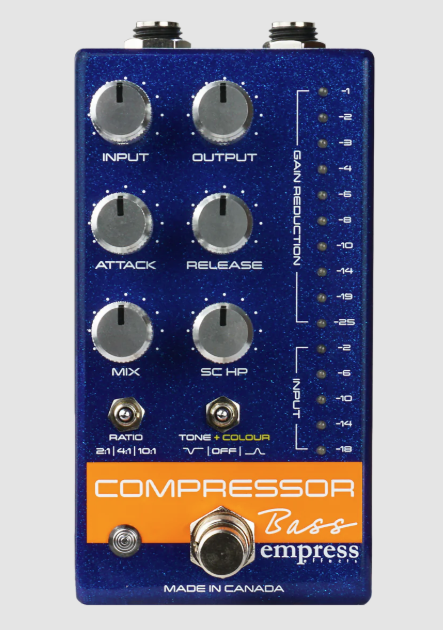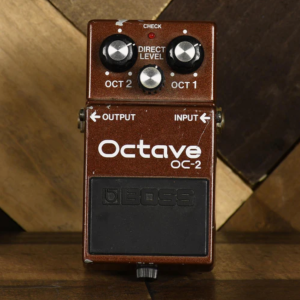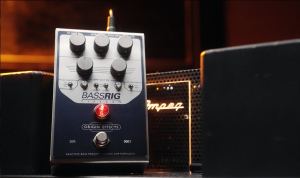A Compressor That Demands — and Rewards — Your Attention
Lately, we’ve been diving deep into the world of bass compression.
We’ve explored vintage options like the Boss CS-2, modern heavy-hitters like the Origin Cali76, and even budget picks such as the TC Electronic SpectraComp.
But when it comes to modern, studio-grade options in a pedal format, there are only a few standout choices that consistently show up in serious discussions. The Origin Cali76, the Diamond Compressor, and today’s focus: the Empress Bass Compressor.

Disclaimer: This pedal was kindly provided by Empress Effects for the purpose of this review. However, this does not influence our opinions or the content of our reviews. We strive to provide honest, unbiased, and accurate assessments to ensure that our readers receive truthful and helpful information.
Overview
The Empress Bass Compressor is specifically voiced for bass, with a frequency response of 10Hz–20kHz. It features an all-analog signal path, true bypass switching, and detailed multi-segment metering for both input and gain reduction. With a mix knob for parallel compression, an external sidechain input, and a variable high-pass filter, this pedal is easily one of the most feature-rich compressors on the market.
Out of the box, it delivers a studio-level feature set, packed into a compact pedal chassis. While many pedal compressors simplify their layout to appeal to casual users, the Empress goes the opposite route: full metering, independent attack and release controls, mix knob, sidechain capabilities, ratio control, and even a two-position Tone + Colour switch that adds subtle tone shaping and harmonic coloration.
For those unfamiliar with compression, the included manual does a fantastic job. It covers basic compression theory and offers sample settings to help get you started. This is a big win considering the pedal’s complexity.
Let’s take a look at the features one by one.
Key Features Explained
Input and Gain Reduction Metering
Many pedal compressors either skip metering altogether or offer a minimal version. Not the Empress. This pedal provides full metering for both input signal and gain reduction — a huge asset for both live and studio use.
Input Control
Sets the input level going into the compression circuit. Higher input levels = more compression.
Output Control
Sets the post-compression output level. This helps balance volume loss from compression, or can be used as a clean boost (fun fact: Empress officially supports bass solos — and so do we at BassGearReviews.com).
Attack
Controls how quickly the compressor reacts once the signal exceeds the threshold.
Release
Controls how quickly the compressor stops compressing after the signal drops below the threshold.
Mix (Parallel Compression)
Blends the dry (uncompressed) and wet (compressed) signals. This is essential for maintaining natural dynamics while gaining sustain — a hallmark of parallel compression.
Sidechain High-Pass Filter
Filters out low frequencies from the sidechain signal (from 20Hz to 400Hz). This lets you prevent low-end thumps from triggering compression too aggressively — great for slap, pick playing, or sidechaining.
Ratio
Determines how aggressively the compressor clamps down on peaks. The Empress offers:
- 2:1 – Gentle, transparent control
- 4:1 – Versatile, general-purpose setting
- 10:1 – Heavy compression, bordering on limiting
Tone + Colour Control
- Left = Midrange scoop at 500Hz
- Right = Upper mid boost at 2kHz
Both positions activate the Colour circuit, which adds subtle harmonic distortion. This can be bypassed via internal DIP switches if you want EQ without added coloration.
This flexibility makes the pedal appealing to both camps: those chasing transparency and those looking for a bit of character in their tone.
Bypass Switch
Standard footswitch for true bypass on/off.

Understanding Sidechain Compression
Sidechain compression uses an external signal to trigger compression on your main signal (your bass). For example, if you run a kick drum into the sidechain, the bass will duck slightly each time the kick hits — useful for mixing clarity.
The Empress includes a 1/8″ sidechain input for this purpose. The incoming sidechain signal doesn’t pass through the pedal’s output — it’s purely used to trigger compression. If no sidechain is connected, the high-pass filter affects how your bass signal triggers the compression.
Performance and Use
The Empress Bass Compressor is extremely versatile. Whether you’re looking for smooth and transparent compression, dynamic control for fingerstyle, punch for slap, or even brick-wall limiting, this pedal handles it all.
However, this is not a plug-and-play pedal. It demands some understanding — or at least curiosity — to get the most out of it. Thankfully, the included manual provides an excellent starting point.
Pros
Studio-Grade Features in a Pedal Format
Unparalleled control in a stompbox: input/output level, metering, attack/release, parallel compression, sidechain HPF — rare even in rack units.
Transparent and Musical Compression
The 2:1 and 4:1 settings offer clean, musical compression that retains dynamics and preserves your playing style.
Tone Shaping Flexibility
With optional mid scoop/boost and harmonic distortion, the Tone + Colour switch adds useful character without locking you into one sound.
Full LED Metering
Visual feedback for both input and gain reduction makes setting levels precise and intuitive.
Parallel Compression
Blend dry and compressed signals for a more musical, natural result — especially useful for bass.
Sidechain High-Pass Filter
Professional-level sidechain control in a pedal. Great for slap, pick, and studio sidechain mixing.
Clear, Helpful Manual
Despite the complexity, Empress makes learning accessible with clear diagrams and starter settings.
True Bypass + Analog Path
Keeps your tone untouched when bypassed, free of digital artifacts.
Cons
Steep Learning Curve
Not ideal for compression beginners or those who want to “set it and forget it.”
Limited Ratio Options
Only 3 ratio settings. While well-chosen, some might want more granularity (e.g., 6:1 or 8:1).
Premium Price Point
You get what you pay for, but this might be out of reach for more casual players.
1/8” Sidechain Input
Inconvenient for some setups — may require adapters or custom cables.
Conclusion: A Compressor That Demands — and Rewards — Your Attention
The Empress Bass Compressor isn’t just another pedal — it’s a studio-grade tool packed into a rugged stompbox. It’s easily one of the most powerful and transparent compressors available to bassists, offering detailed control over every aspect of your dynamic range.
What sets it apart is its complexity — and that’s intentional. Empress built this for players who want control. If you’re the kind of bassist who likes to tweak, shape, and perfect your tone, this pedal will deliver in spades.
But make no mistake: it’s not a casual, plug-and-play affair. It demands time, understanding, and a willingness to learn. If you’re ready to invest that effort, the Empress Bass Compressor will not only meet but likely exceed your expectations.
In Short:
For the discerning bass player who wants surgical control, tonal flexibility, and professional-level performance, the Empress Bass Compressor is one of the best compressors money can buy.





